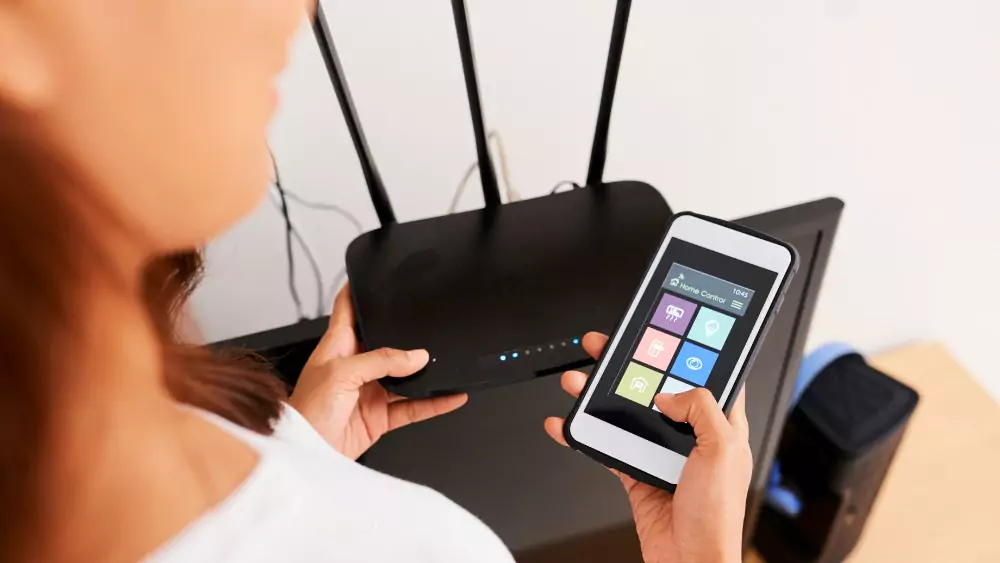
Google Wifi and Nest routers simplify the process of setting up a home mesh network, delivering a reliable, fast signal throughout large homes with numerous devices. However, the issue of privacy resulting from hacker attacks has not been eradicated, making the protection of your home network paramount. The best way to do this is via a Google Wifi VPN, which encrypts your connection and thus protects your information from threats, especially when browsing apps or engaging in activities like watching bad stuff on the internet that could expose your data.
With a Google Wifi VPN, the protection extends to an entire network since you do not have to install the VPN on a router and each device separately. This article will guide you through setting up a VPN on Google WiFi and Nest systems effortlessly, ensuring that you stop wasting time on the internet worrying about security risks.
Does Google Wi-fi Support VPN?

Google Nest Wi-Fi routers are outstanding for stagnant dependability and extraordinary performance, but there’s a hitch. The routers cannot support VPN integration, and configuring PPTP or L2TP connections isn’t possible. Unfortunately, this can be a drawback of the internet and modern technology, especially when it comes to securing all devices in a home network.
Alternatively, you can configure many other router models for automatic VPN connection or simply put them in third-party firmware like DD-WRT or ASUSWRT-Merlin. Unfortunately, none of these custom firmware options are available for the Google Nest Wi-Fi routers.
But does that mean you cannot use a Google Wifi VPN with Google Nest Wi-Fi? Not exactly!
How to Use a VPN on Google Wi-Fi?
The only method to get Google WiFi working with a VPN is by setting up an extra router. To achieve this, place a VPN-enabled router before your Google WiFi network, allowing the traffic from Google Wifi VPN to pass through the extra router. This setup lets you use any VPN provider, such as CyberGhost, Private Internet Access, StrongVPN, and NordVPN etc. Plus, you can choose specific devices to connect directly to the VPN, as many VPN providers support simultaneous connections across multiple devices.
How to Set up a Google Nest Wi-Fi VPN?

Step #1 – Here’s what you’ll need
- Google Wi-Fi or a Google Nest router.
- A router with VPN support. Many models from Asus, Linksys, Netgear, TP-Link, or Xiaomi work, and some VPN services even provide pre-configured routers.
- An Ethernet cable
- A VPN subscription
Step #2 – Dual-router Setup
In this step, we will link the two routers and ensure everything operates smoothly before activating the VPN. Here are the steps to take:
- Adjust Google router’s subnet We must ensure that the IP address ranges for each router do not conflict. Typically, most routers (including Google’s) assign IP addresses within the range: 192.168.1.xxx. If your VPN router runs under the 192.168.1.xxx subnet as most routers, then Google Wi-Fi should locate on another subnet. For ease, we’ll utilize 192.168.2.xxx.
Here’s what to do:
- Go to Wi-Fi, click Settings and find Advanced Networking.
- When you find yourself in the Advanced Networking section, simply click on LAN.
- Third, enter 192.168.2.1 in the Router LAN address field. Then, press Save.
- Make sure DHCP is enabled so the router can assign unique IP addresses to connected devices.
- Link the two routers together Connect an Ethernet cable into any available LAN slot on your VPN router; the other end plugs into the WAN slot of the Google Wi-Fi router. You should connect the Ethernet cable from the LAN port on the main router to the WAN or internet-in port of the subsequent Google Wi-Fi router. If you haven’t already, connect the WAN port of your VPN router to your cable modem (or other internet source).
- Check and Verify After linking both routers, it’s essential to test the connection. Start by connecting to your Google WiFi network to see if it’s functioning properly. If your mesh system behind the main router operates smoothly, you can proceed with setting up a VPN on it.
Step #3 – Configuring the VPN router
Now that your Google mesh system is functioning behind your main router, it’s time to activate the VPN feature on the primary router.
If you’ve already configured it and it’s operational, simply switch on the VPN. After it’s enabled, test everything to ensure all your devices are now routed through the VPN.
If the VPN hasn’t been set up yet, keep going.
- Install firmware that supports VPN (if needed) If your router is already equipped with VPN capability, you can configure it following the guidelines provided by the manufacturer. If your router does not have built-in VPN support, you should ideally have looked at routers with support for VPN-friendly firmware such as DD-WRT, Portal, Sabai, FreshTomato, EdgeRouter, and more.
- Configure the VPN Following the router flashing process and making sure it is functional, the next stage is to configure the VPN. The procedures may also differ and depend on the service to be rendered. First of all, go to the support section of your VPN provider and look if there is any guide for this router.
Step #4 – Check your connection
Connect your Google WiFi network and check if the linking of the connection is normal. Start by turning off the VPN connection, and then open any website to check whether the connection is active or not.
Final Words
Setting up a VPN on Google Wifi or Nest routers requires a workaround, as these routers don’t natively support VPN integration. However, with the help of an additional VPN-enabled router, you can extend the VPN’s protection across your entire network. By linking your Google Wifi system to this router and configuring the necessary IP addresses, you ensure a seamless and secure connection for all your devices. While the process involves a few technical steps, like adjusting subnets and setting up firmware, following this guide will have you surfing the web with enhanced privacy and security in no time.
